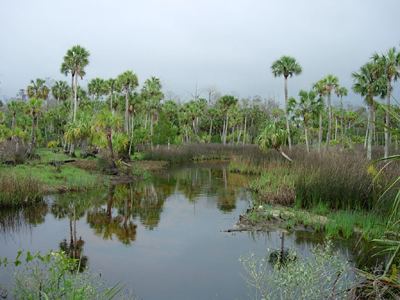Address Old Town, FL 32680, USA Established 1979 | Area 53,000 acres (210 km) Phone +1 352-493-0238 | |
 | ||
Governing body U.S. Fish and Wildlife Service Hours Open today · 7:30AM–4PMTuesday7:30AM–4PMWednesday7:30AM–4PMThursday7:30AM–4PMFriday7:30AM–4PMSaturdayClosedSundayClosedMonday7:30AM–4PM Similar US Fish & Wildlife Services, Cedar Keys National, Shell Mound Campgro, Yellow Jacket RV Resort, Manatee Springs State Park | ||
Florida travel escape to the lower suwannee national wildlife refuge
The Lower Suwannee National Wildlife Refuge (LSNWR) is part of the United States National Wildlife Refuge System. It is located in southeastern Dixie and northwestern Levy counties on the western coast of Florida, approximately fifty miles southwest of the city of Gainesville.
Contents
- Florida travel escape to the lower suwannee national wildlife refuge
- Creek fishing in lower suwannee national wildlife refuge
- Human historical significanceEdit
- Habitat managementEdit
- References
The 53,000-acre (210 km2) wildlife refuge was established in 1979 to protect one of the largest undeveloped river delta systems in the United States. It includes twenty miles (32 km) of the Suwannee River estuary and twenty miles (32 km) of coastline. The constant influx of nutrients from the Suwannee River combined with numerous off-shore islands and tidal creeks create excellent wildlife habitat which supports kites, bald eagles, manatees, sturgeon, deer, and turkeys, to name but a few of the species which take refuge there.
For tourists, the refuge offers bird and wildlife observation, wildlife photography, fishing, canoeing, hunting, and interpretive walks. As of 2005, a wildlife driving tour is under construction and several boardwalks and observation towers offer views of refuge wildlife and habitat.
Creek fishing in lower suwannee national wildlife refuge
Human historical significanceEdit
A 9-meter (30 ft) prehistoric midden known as the Shell Mound, which may be as much as 3,000 years old, is enclosed within the Refuge, along with other evidence of ancient human habitation.
Habitat managementEdit
Before the Lower Suwannee National Wildlife Refuge was established, much of the area was under commercial timber management, first by Putnam Lumber Company in the early 1900s, then by a succession of other timber and paper companies, notably Georgia-Pacific and Packaging Corporation of America. In the late 20th century, efforts were initiated to restore many of these areas to a more natural, pre-exploitation condition. Acres of loblolly pines were cruised, marked and selectively thinned — and in some cases clear-cut — to move toward reforestation to a native sandhill community of longleaf pine and wiregrass. Scrubland habitat is being restored and improved on high, dry sandy ridge areas where it was originally found.
In 2001, a conservation easement on the nearby California Swamp was acquired by the Suwannee River Water Management District, improving habitat preservation throughout the area. [1]
Wildfires from lightning strikes have always occurred naturally throughout much of the United States and is a critical component of many Florida ecosystems: many species of wildlife such as the Florida scrub jay depend on fire to sustain their habitat. Today, many of those fires cannot be left to burn unmanaged due to development. The United States Fish and Wildlife Service is one of many agencies that use prescribed fire to mimic natural fires in a controlled manner. Fire lines are established with heavy equipment, trained personnel operate under a specific plan, and fires are intentionally set to help reduce hazardous fuels in the wildland/urban interface, replenish nutrients into the soil, and control vegetation by reducing undesirable species or vegetation heights. The goal is to burn areas that need fire every two to five years to maintain optimum habitat conditions.
At times, the refuge water management activities (i.e. controlling water levels with man-made structures such as culverts) create additional seasonal habitat for wading birds. Due to tidal influence, this activity is not often needed.
